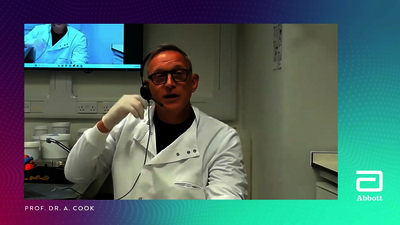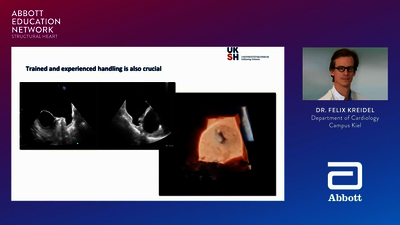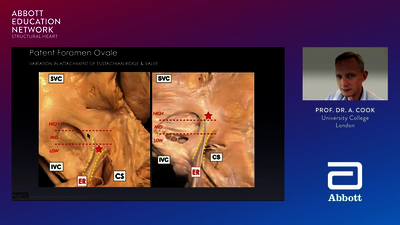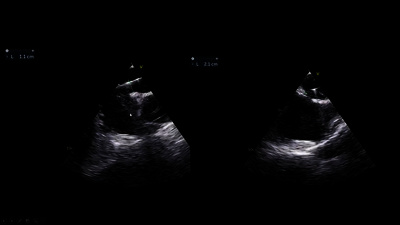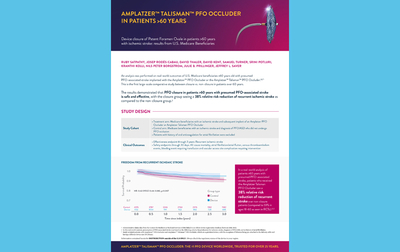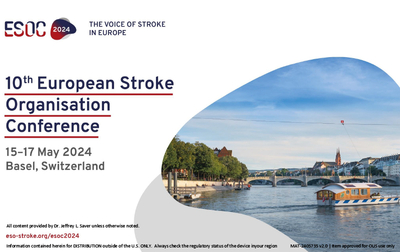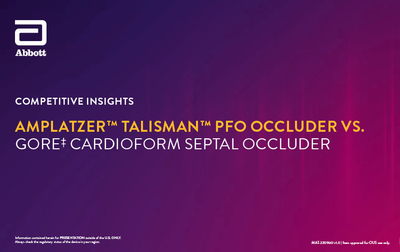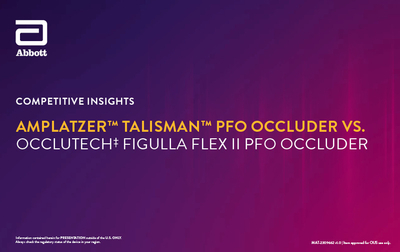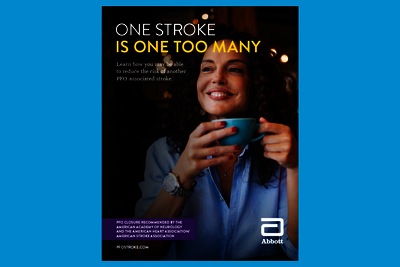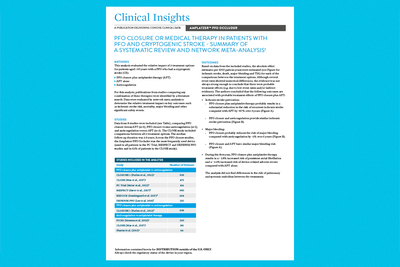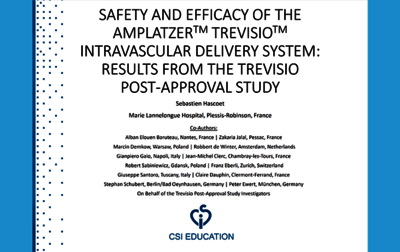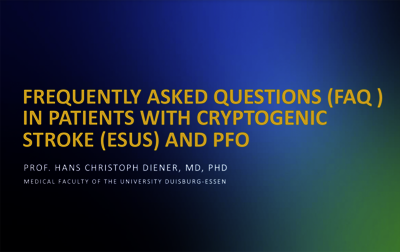Das patentierende Foramen ovale (PFO) ist ein embryonaler Defekt, der mit einem erhöhten Risiko für einen ischämischen Schlaganfall verbunden ist.1 Der Verschluss des PFO in Kombination mit einer langfristigen Thrombozytenaggregationshemmung wird empfohlen, um bei ausgewählten Patient:Innen einen erneuten Schlaganfall zu verhindern.2
Für weitere Informationen zum PFO Verschluss
WÄHREND DES VERFAHRENS
Der PFO-Verschluss ist ein minimalinvasiver Eingriff, der in Vollnarkose oder unter Sedierung in einem Herzkatheterlabor durchgeführt wird.
Unter Röntgendurchleuchtung und intrakardialer Echokardiographie wird ein Katheter bis ins Herz vorgeschoben um dort den Defekt zu verschließen.
Sobald der Okkluder platziert, untersucht der Kardiologe dessen Position sorgfältig mit Hilfe von bildgebenden Verfahren.
WAS GESCHIEHT NACH DEM PFO-ABSCHLUSSVERFAHREN?
Nach dem Eingriff wird der interventionelle Kardiologe mit dem Patienten einen Nachsorgeplan besprechen. Der Patient kann damit rechnen, innerhalb von 24-48 Stunden aus dem Krankenhaus entlassen zu werden. Er erhält möglicherweise Aspirin (81 bis 325 mg) und Clopidogrel (75 mg) zur täglichen Einnahme für einen Monat nach dem Implantationsverfahren, gefolgt von täglichem Aspirin (81 bis 325 mg) allein für mindestens 5 weitere Monate. Zusätzliche Medikamente (in der Regel tägliches Aspirin) können über 6 Monate hinaus verschrieben werden. Die Patienten:Innen sollten sich nach 6 Monaten einem Echokardiogramm unterziehen, damit das Ärzteteam sicherstellen kann, dass der Okkluder richtig implantiert ist.

Präsentieren Sie Ihren Patienten:Innen den PFO-Verschluss als eine Option
Informationen und Ressourcen zur Weitergabe an Patienten:Innen finden Sie unter vermeide-schlaganfall.de
- Kent DM, Thaler DE. Is patent foramen ovale a modifi able risk factor for stroke recurrence? Stroke. 2010;41(10 Suppl 1):S26–30. doi.org/10.1161/STROKEAHA.110.595140.
- Messé SR, Gronseth GS, Kent DM, et al. Practice advisory update summary: patent foramen ovale and secondary stroke prevention. Neurology. 2020;94(20):876–885. doi.org/10.1212/WNL.0000000000009443.
- Homma S, Sacco RL. Patent foramen ovale and stroke. Circulation. 2005;112(7):1063–1072. doi.org/10.1161/CIRCULATIONAHA.104.524371.
- Mojadidi MK, Zaman MO, Elgendy IY, et al. Cryptogenic stroke and patent foramen ovale. J Am Coll Cardiol. 2018;71(9):1035–1043. doi.org/10.1016/j.jacc.2017.12.059.
- Saver JL. Clinical practice. Cryptogenic stroke. N Engl J Med. 2016;374(21):2065–2074. doi.org/10.1056/NEJMcp1503946.
- Kernan WN, Ovbiagele B, Black HR, et al. AHA/ASA guidelines for the prevention of stroke in patients with stroke and transient ischemic attack. Stroke. 2014;45(7):2160–2236. doi.org/10.1161/STR.0000000000000024.
- Homma S, Sacco RL, Di Tullio MR, et al. E ect of medical treatment in stroke patients with patent foramen ovale: patent foramen ovale in cryptogenic stroke study. Circulation. 2002;105(22):2625–2631. doi.org/10.1161/01.CIR.0000017498.88393.44.
- Elgendy AY, Saver JL, Amin Z, et al. Proposal for updated nomenclature and classifi cation of potential causative mechanism in patent foramen ovale-associated stroke. JAMA Neurol. 2020;77(7):878–886. doi.org/10.1001/jamaneurol.2020.0458.
- Pristipino C, Sievert H, D’Ascenzo F, et al. European position paper on the management of patients with patent foramen ovale. EuroIntervention.2019;14(13):1389–1402. doi.org/10.4244/EIJ-D-18-00622.
- Diener H-C, Sacco RL, Easton JD, et al. Dabigatran for prevention of stroke after embolic stroke of undetermined source. N Engl J Med. 2019;380(20):1906–1917. doi.org/10.1056/NEJMoa1813959.



